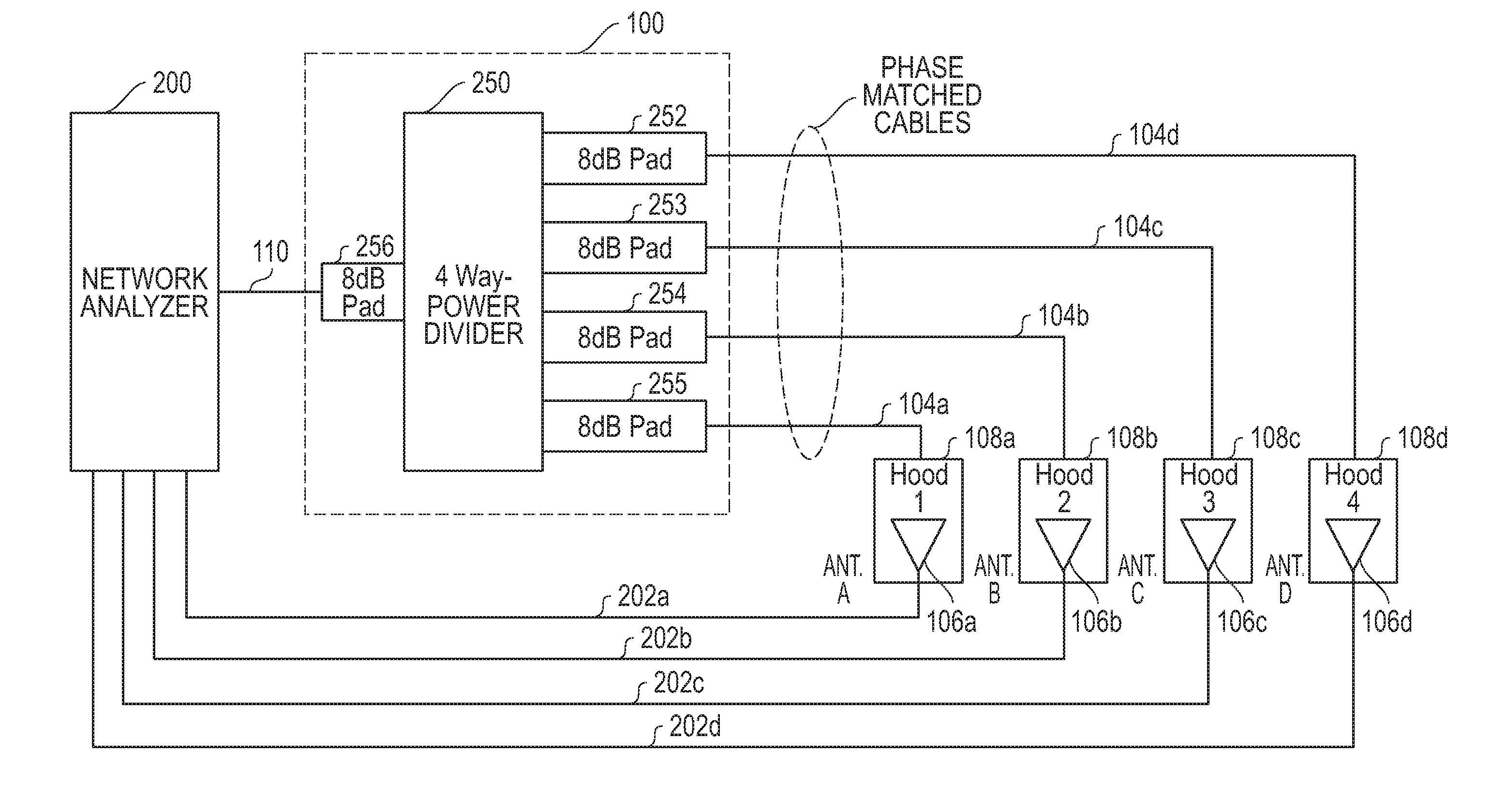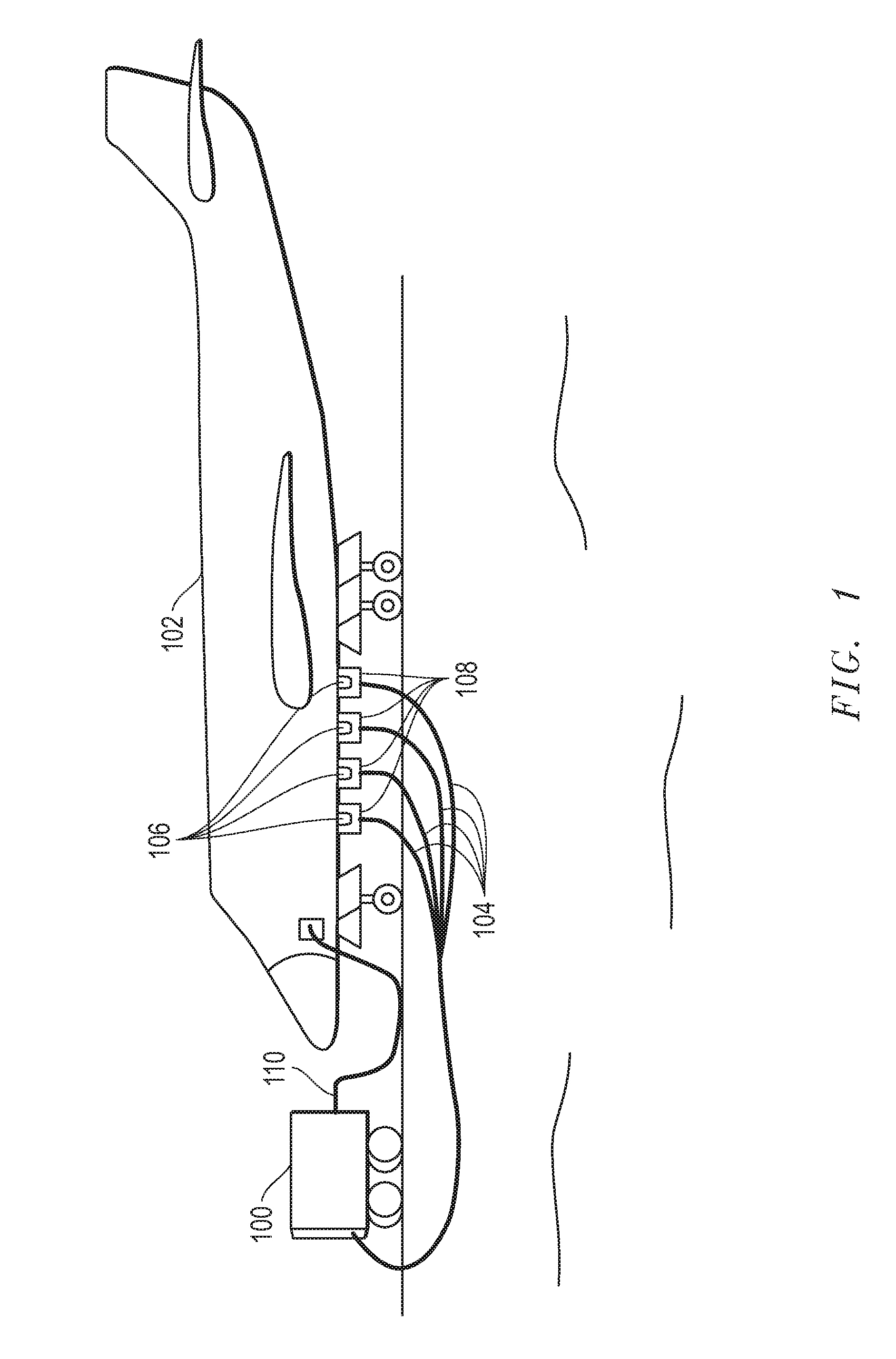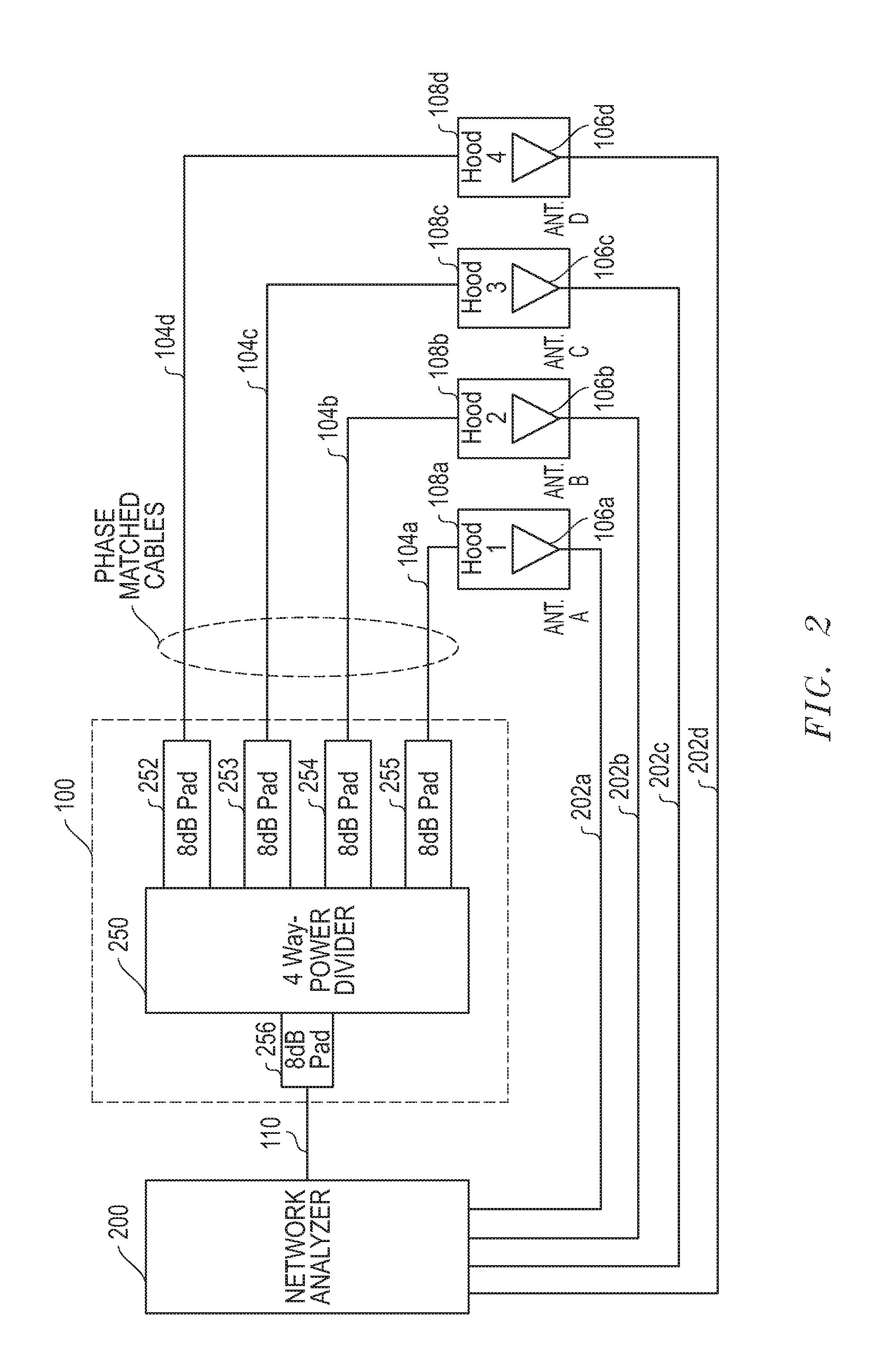Antenna testing enclosures and methods for testing antenna systems therewith
a technology for antenna systems and enclosures, applied in the field of antennas, can solve the problems of limited phase difference measurement in conventional systems, and achieve the effects of improving system testing accuracy, cost saving, and improving isolation
- Summary
- Abstract
- Description
- Claims
- Application Information
AI Technical Summary
Benefits of technology
Problems solved by technology
Method used
Image
Examples
Embodiment Construction
[0023]FIG. 1 illustrates an aircraft 102 (e.g., manned aircraft, unmanned drone, etc.) configured with a DF receiver system that includes an array of multiple external antennas 106 that are configured to receive and locate a radio frequency (RF) signal while aircraft 102 is airborne. In this embodiment, each of antennas 106 are blade antennas, such as a Dayton Granger DG 720032 or a Chelton Microwave 11D28500 blade antenna. However, it will be understood that the disclosed apparatus, systems and methods may be employed with other types of antennas and / or may be employed with single antennas rather than multiple antennas of an antenna array. Moreover, it will also be understood that the disclosed apparatus, systems and methods may be employed with one or more antennas mounted on or otherwise provided on mobile or stationary platforms other than a fixed wing aircraft, e.g., such as a helicopter, building, cell or other type of antenna tower, truck, ship, submarine, etc.
[0024]As shown ...
PUM
 Login to View More
Login to View More Abstract
Description
Claims
Application Information
 Login to View More
Login to View More - R&D
- Intellectual Property
- Life Sciences
- Materials
- Tech Scout
- Unparalleled Data Quality
- Higher Quality Content
- 60% Fewer Hallucinations
Browse by: Latest US Patents, China's latest patents, Technical Efficacy Thesaurus, Application Domain, Technology Topic, Popular Technical Reports.
© 2025 PatSnap. All rights reserved.Legal|Privacy policy|Modern Slavery Act Transparency Statement|Sitemap|About US| Contact US: help@patsnap.com



